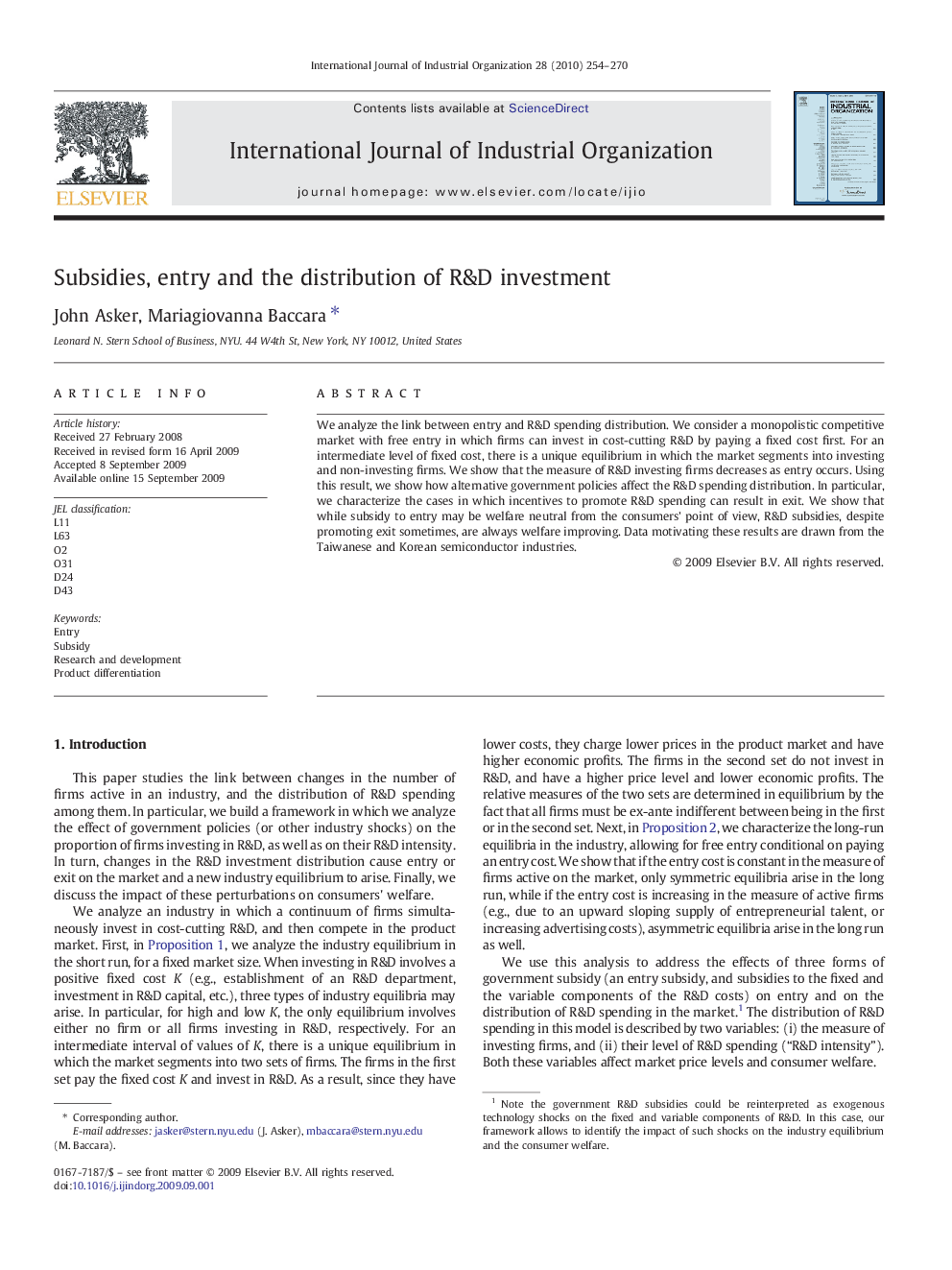| Article ID | Journal | Published Year | Pages | File Type |
|---|---|---|---|---|
| 5078523 | International Journal of Industrial Organization | 2010 | 17 Pages |
Abstract
We analyze the link between entry and R&D spending distribution. We consider a monopolistic competitive market with free entry in which firms can invest in cost-cutting R&D by paying a fixed cost first. For an intermediate level of fixed cost, there is a unique equilibrium in which the market segments into investing and non-investing firms. We show that the measure of R&D investing firms decreases as entry occurs. Using this result, we show how alternative government policies affect the R&D spending distribution. In particular, we characterize the cases in which incentives to promote R&D spending can result in exit. We show that while subsidy to entry may be welfare neutral from the consumers' point of view, R&D subsidies, despite promoting exit sometimes, are always welfare improving. Data motivating these results are drawn from the Taiwanese and Korean semiconductor industries.
Related Topics
Social Sciences and Humanities
Economics, Econometrics and Finance
Economics and Econometrics
Authors
John Asker, Mariagiovanna Baccara,
